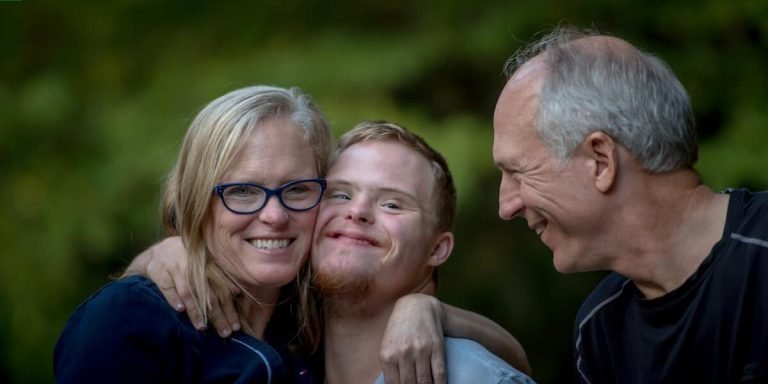Special Needs Class: Cultivating an Inclusive Learning Environment for All Children
In today’s diversified classrooms, the concept of ‘special needs class’ has moved from isolation to mainstream acceptance. Schools and educators continually strive for strategies that transform learning environments into inclusive spaces where every child thrives irrespective of their unique abilities or challenges. This shift signifies a broader perspective on educational justice, ensuring no child is left behind in acquiring an excellent education.
The crux lies within understanding each student’s individual requirements in special needs classes and leveraging specific resources and support tactics. It involves teachers employing differentiated instruction methods suitable for children with varying levels of cognitive ability while peers learn universal values such as empathy, patience, kindness through interactions – paving way for personal growth beyond just academics.
Did you know?
Did you know? Inclusive classrooms, where special needs students learn alongside their peers, have been shown to improve reading and math skills for both groups. This fosters not just academic growth but also social-emotional development among all learners (source: The National Center for Education Statistics).
Understanding Special Education: Resources for Effective Support
Special education can be a complex maze for parents and educators alike. As opposed to the past, where special needs classes were often isolated or operated without much strategic planning, today’s approach is different – thanks to technology integration in education. The objective now focuses on maximizing each child’s potential by providing tailored learning experiences that are adapted to their unique abilities.
A wealth of specialized resources has seen light with the advent of digital solutions as part and parcel of educational systems worldwide; these have proven instrumental when it comes to supporting children enrolled in special needs classes effectively. Not only do they enhance accessibility but also foster an environment conducive for individual growth catered specifically towards students’ diverse developmental landscapes.
In realizing such effective support mechanisms within classrooms, various software applications play vital roles helping tutors devise custom lesson plans suitable for all learners regardless of their cognitive levels or physical capabilities—an excellent example being ‘Adaptive Learning Platforms’. These create personalized modules based on day-to-day student performances fed into its algorithmic system thereby promoting meaningful engagements alongside better assimilation rates leading towards successful academic journeys even amidst challenging circumstances!
The Role of Individualized Education Programs (IEPs)
Individualized Education Programs (IEPs), an essential component of special education resources and support, stand as the pillar of every child’s educational journey within a special needs class. In 2023, understanding its role is fundamental for both parents and educators to provide effective assistance.
Integrating this program into your teaching strategies or parenting approach can yield positive outcomes on various levels.
1) Ensures Tailored Instruction: One major advantage of having an IEP is the provision for tailored instruction designed according to individual skills and requirements.
2) Promotes Active Participation: An active involvement from both school officials & parents while developing these programs helps ascertain that the provided services align perfectly with students’ necessities.
3) Provides Progress Overview: Equipped with detailed progress reports at regular intervals displaying advancement towards predefined academic objectives underlines another crucial aspect of why IEPs are important.
Implementing technology further enhances this process by introducing multiple platforms hosting extensive materials suited for learners across various spectrum scales.
Navigating the Landscape of Special Needs Assistance
Navigating the landscape of special needs assistance might seem like a daunting task, but effectively utilizing resources can ease parents and educators into this important journey. In 2023, thanks to advancements in technology, support for students enrolled in special needs class has substantially evolved.
The integration of technology in education is not just an innovative stride; it’s revolutionizing how we approach childhood learning. One tool making headlines includes adaptive software programs tailored specifically for children with diverse abilities. These applications engage students operating on different cognition levels through interactive content that meets their unique educational requirements.
Yet another resource for effective support lies within online platforms offering shared community experiences. Parents navigating similar paths connect over these networks exchanging insights about therapies, routines etc., fostering solidarity and informed decision-making among individuals exploring solutions suitable for a special needs class environment.
Evaluating and Selecting Appropriate Resources for Your Special Needs Class
Evaluating and selecting the right resources for your special needs class can be an overwhelming task, given the plethora of tools available in 2023. But here’s where technology integration plays a vital role. It not only simplifies this process but also aligns perfectly with individual learning goals.
One cannot deny that every child is unique, especially when it comes to children with special needs. Their diverse requirements call for personalized education strategies equipped with targeted technological aids tailored specifically towards their growth trajectory. As educators or parents navigating through this challenging path, understanding specific educational technologies can significantly change how we approach teaching these young learners.
Comprehensive digital platforms offer user-friendly interfaces and customizable features designed specifically for children with special needs. These platforms include interactive games and virtual reality-based experiential learning apps that aim to enhance cognitive abilities and promote enjoyment during lessons.
The key is to select the best resources based on student-specific criteria like age, mental capacity, and interests. This approach creates a supportive environment that encourages engagement and ensures academic advancement.
Technology Tools That Enhance Learning for Diverse Abilities
In the modern era of education, technology integration plays a vital role in fostering an inclusive environment for children with diverse abilities. Particularly within a special needs class setting, educators are constantly seeking innovative strategies and resources to support their students’ unique learning styles.
One way this can be achieved is through tailored educational technologies that aim at enhancing the student’s grasp on different subjects. These tools not only make teaching more effective but also create room for individual progress regardless of any learning limitations or challenges faced by these exceptional learners.
The first category includes adaptive software programs such as G Suite apps like Google Classroom; it allows teachers to customize lessons based on each student’s level of understanding. Also noteworthy is Kurzweil 3000 which provides comprehensive reading assistance along with multiple languages translation feature catering to non-native English speakers thus making comprehension easier for them.
Interactive whiteboards too prove beneficial providing audio-visual interactive material increasing attentiveness ultimately resulting improved cognitive skills.
Lastly, online platforms offering multitude supportive services especially counseling therapy sessions geared towards emotional well-being improvement emerge as blessing if face-to-face consultation isn’t available due frequent lockdowns pandemic situations witnessed recently.
Incorporating Sensory Activities and Therapies in the Classroom
When it comes to creating a nurturing environment for your special needs class, incorporating sensory activities and therapies can significantly enhance the learning experience. Given today’s technological advancements in education, there are now innovative ways of integrating these elements into traditional classroom settings.
Sensory activities aren’t just fun; they’re critical tools that support cognitive growth, language development, fine and gross motor skills improvement amongst children with special needs. By introducing technology-assisted sensory experiences like interactive whiteboards or tactile tablets like the Sounding Board app which allows them to express themselves visually and audibly helps foster communication abilities.
Therapeutic exercises play pivotal role managing emotional health of kids with neurological differences . Apps like Calm offer guided meditation sessions tailored towards relaxation for kids struggling coping stress issues .
Collaboration Strategies in Special Education Settings
The realm of special education has been significantly transformed with the integration of technology, paving new paths for establishing effective collaboration strategies in the year 2023. Acknowledging its profound potential to boost learning processes and streamline communication channels, educators are now keen on leveraging digital solutions within their classrooms catering to students with special needs.
Collaboration holds a pivotal role when it comes to designing individualized lessons plans for children receiving special education services. With current advancements seen in assistive technologies like adaptive hardware or software tools, this practice is being made more practical and efficient than ever before. These tech resources aid specially trained teachers by helping them create an engaging yet inclusive environment where every child feels valued regardless of their unique abilities or disabilities.
Furthermore, they serve as platforms promoting greater cooperation among all individuals involved – be it students themselves sharing ideas through virtual collaborations; parents keeping track via real-time updates; therapists delivering remote consultations, or even specialists exchanging crucial insights about educational best practices globally.
Fostering Parent-Teacher Partnerships for Student Success
In the landscape of special education, fostering parent-teacher partnerships is a vital component for student success. With technological advancements and resources accessible in 2023, such partnerships are even more achievable and impactful.
Teachers play a crucial role as they possess first-hand knowledge about the child’s development during school hours. On the other hand, parents understand their child’s holistic growth – physically, emotionally, mentally that transcends beyond classroom boundaries.
So how does technology facilitate this partnership?
1) Virtual Communication Platforms: Thanks to applications like Zoom or Google Meet used extensively since COVID-times now offer seamless interaction between teachers and parents irrespective of geographical barriers.
2) Shared Digital Portfolios: Many online tools allow teachers to share students’ work with their parents regularly., providing insights into their kid’s academic progress anytime anywhere.
3) Parent Portal Systems: Schools often have dedicated apps or web-based systems where all relevant information can be accessed easily—homework status , attendance record etc .
Interdisciplinary Team Approaches to Holistic Development
The interdisciplinary team approach is one strategy in special education settings that cannot be overlooked, particularly in today’s digitally-driven educational landscape. This method puts the focus on the holistic development of a child in a special needs class by leveraging different areas of expertise from various educators and professionals.
Bringing together teachers specialized in mathematics, physical education instructors with knowledge about motor skills improvement or speech pathologists who work towards bettering communication abilities can create an efficient learning environment for children. Each expert brings their unique perspective to support students’ progress drawing from their area of specialization which further reinforces this collaborative technique as vital to improving outcomes for students with disabilities.
Technology has amplified opportunities for collaborative teaching methods across multiple disciplines at once. Virtual learning platforms are being used as ‘digital classrooms’, fostering connectivity between involved parties while making interactions seamless irrespective of geographical barriers.
Many schools now employ tech-savvy tools like electronic whiteboards and touchscreen devices within classroom environments promoting interactive lessons that cater specifically to each student’s individualized program goals thus aiding academic growth more efficiently.
In addition, online resources such as webinars focusing on topics relevant to specific impairments help not just educators but also parents obtain information necessary for nurturing overall development at home too ensuring consistency alongside school interventions.
Conclusion
In essence, a special needs class does not simply benefit the learners who attend it but also fosters an atmosphere of acceptance and understanding among all students. It equips them with life skills beyond academics; teaching empathy, patience, resilience which are equally vital in building a well-rounded personality. Thus creating an inclusive learning environment through special needs classes ultimately shapes our children into compassionate global citizens.
We hope this has given you insight on how significant these classrooms can be for every child’s holistic development and why they should be encouraged more often within educational systems everywhere. Navigate your way around our website to discover more about tools and strategies that help parents or educators nurture their young minds efficiently. Let’s educate together because shaping young lives goes far beyond structured lessons – it is indeed raising future generations!







